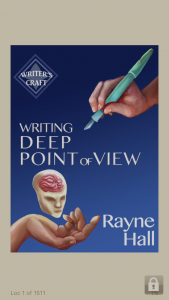Stephen King, along with many other writers, is firm in saying that if you want to write, you also have to read a lot. So what can you learn as a writer who reads?
There are many books around that teach you who to write better, but one of the best ways to learn is to see the advice in action. You want to master Point of View? Study books to see how they handle it. I have a list of books that I turn to when I want to see how to handle First Person, for example, to see how they deal with transitions between the present tense and the past, or to see how they make dialogue sound like fiction and not memoir, or avoid telling instead of showing. You want to see how books handle description? You want to see how they handle pace? How long a chapter usually is in that genre? How long the book is? Find a book and read it as a writer.
There are different levels of reading. Firstly, you learn to read for information and entertainment. Then you start to notice the little tricks that the writer uses to create an effect, or to make a point. Then you reach the point where you can start to use those tricks yourself. How can you expect to use those tricks if you’ve never seen them in use?
It’s also useful to make a note of books that use specific techniques – for example, The Martian is a great book to study. It makes use of first person via logs. It makes use of third person when it needs to. And, of course, it was a self-published book that then attracted a contract and a huge movie.
Beta reading can work too; sometimes it’s even more informative to see a less polished piece of work, and try to figure out what the issue is. But don’t assume that beta reading is enough. The wider you read, the better, and enjoy what you read. Just keep at least half an eye on the tricks the author uses, and think about whether you can adapt them for your own use.

